When a person is charged with a crime, it’s common for people to have fear about what they could be facing. It’s important to have an attorney who understands the ramifications of being charged with a crime. In Indiana, the Court has discretion to impose any permissible sentence within the Indiana criminal sentencing guideline. In this article, we are going to discuss the following:
- Sentencing Guidelines
- Advisory Sentences
- Aggravating & Mitigating Circumstances
- Habitual Offenders
- Suspended Sentences
SENTENCING GUIDELINES
In July of 2014, Indiana enacted changes to the Indiana Criminal Code. The prior sentencing classification system of A-D felonies were replaced with six classes of felony crimes, defined as Level 1 – Level 6. Level 1 felonies are the most severe.
There are three classes of misdemeanors, A-C. A misdemeanors are the most severe.
The following tables show the range of time for each level felony and misdemeanor class, the advisory sentence, and the potential fine:
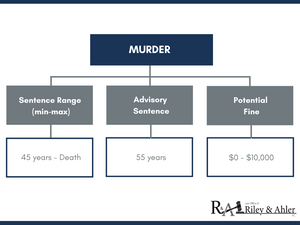
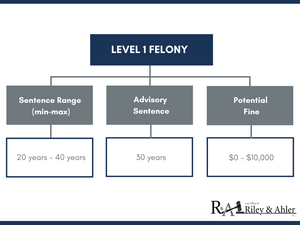
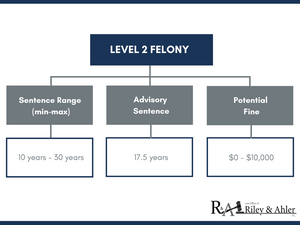
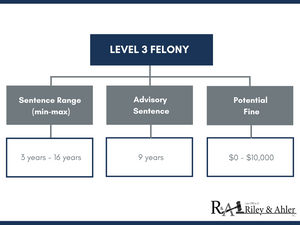
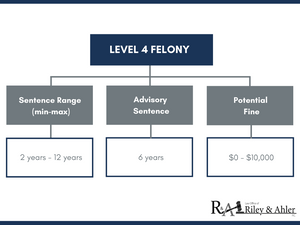
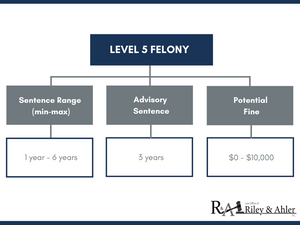
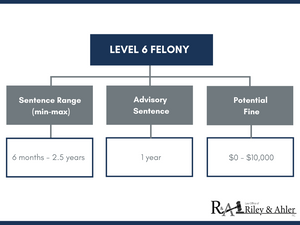
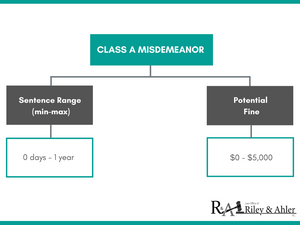
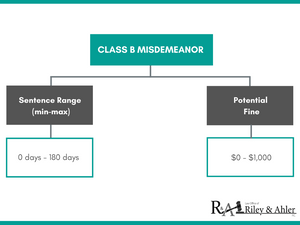
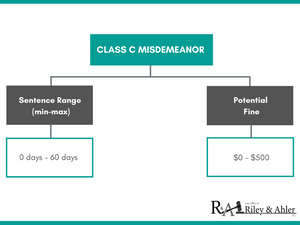
WHAT IS AN ADVISORY SENTENCE?
The law allows a judge a lot of discretion when determining a sentence. It also raises questions for many clients. How does a judge determine if a sentence is going to be 3 years or 16 years for a Level 3 felony? Also, what does “advisory sentence” mean?
The Indiana Code defines an “advisory sentence” as a guidelines sentence that the court may voluntarily consider when imposing a sentence. IC 35-50-2-1.3. In other words, a judge can go up or down in the length of the sentence depending on aggravating or mitigating circumstances that a judge may find in particular case.
AGGRAVATING CIRCUMSTANCES AFFECTING SENTENCING
Indiana Code 35-38-1-7.1 provides the following eleven (11) factors a court may consider as aggravating circumstances, which may lead the court to impose a sentence greater than the advisory sentence:
- The harm, injury, loss, or damage suffered by the victim of an offense was (A) significant and (B) greater than the elements necessary to prove the commission of the offense.
- The person has a history of criminal or delinquent behavior.
- The victim of the offense was less than twelve (12) years of age or at least sixty-five (65) years of age at the time the person committed the offense.
- The person: (A) committed a crime of violence (IC 35-50-1-2) and (B) knowingly committed the offense in the presence or within hearing of an individual who (i) was less than eighteen (18) years of age at the time the person committed the offense and (ii) is not the victim of the offense.
- The person violated a protective order issued against the person under IC 34-26-5 (or IC 31-1-11.5, IC 34-26-2, or IC 34-4-5.1 before their repeal), a workplace violence restraining order issued against the person under IC 34-26-6, or a no contact order issued against the person.
- The person has recently violated the conditions of any probation, parole, pardon, community corrections placement, or pretrial release granted to the person.
- The victim of the offense was a person with a disability (as defined in IC 27-7-6-12), and the defendant knew or should have known that the victim was a person with a disability, or the victim mentally or physically infirm.
- The person was in a position having care, custody, or control of the victim of the offense.
- The injury to or death of the victim of the offense was the result of shaken baby syndrome (as defined in IC 16-41-40-2).
- The person threatened to harm the victim of the offense or a witness if the victim or witness told anyone about the offense.
- The person committed trafficking with an inmate under and is an employee of the penal facility.
Essentially, an aggravating factor is a factors that work against an individual and justify a judge giving a defendant a longer or harsher sentence.
MITIGATING CIRCUMSTANCES AFFECTING SENTENCING
Indiana Code 35-38-1-7.1 provides the following eleven (11) factors a court may consider as mitigating circumstances, which may lead the court to impose a sentence less than the advisory sentence:
- The crime neither caused nor threatened serious harm to persons or property, or the person did not contemplate that it would do so.
- The crime was the result of circumstances unlikely to recur.
- The victim of the crime induced or facilitated the offense.
- There are substantial grounds tending to excuse or justify the crime, though failing to establish a defense.
- The person acted under strong provocation.
- The person has no history of delinquency or criminal activity, or the person has led a law-abiding life for a substantial period before commission of the crime.
- The person is likely to respond affirmatively to probation or short term imprisonment.
- The character and attitudes of the person indicate that the person is unlikely to commit another crime.
- The person has made or will make restitution to the victim of the crime for the injury, damage, or loss sustained.
- Imprisonment of the person will result in undue hardship to the person or the dependents of the person.
- The person was convicted of a crime involving the use of force against a person who had repeatedly inflicted physical or sexual abuse upon the convicted person and evidence shows that the convicted person suffered from the effects of battery as a result of the past course of conduct of the individual who is the victim of the crime for which the person was convicted.
A mitigating factor works in a defendant’s favor and justifies a judge in ordering a lighter sentence.
HOW ARE THE CRIMINAL SENTENCING GUIDELINES AFFECTED BY A HABITUAL OFFENDER ENHANCEMENT?
Indiana Code 35-50-2-8 describes the requirements and sentencing enhancements for “habitual offenders”. Under this code, the State may seek to have a person sentenced as a habitual offender for a felony by alleging that the person accumulated the required number of prior unrelated felony convictions in a certain time period. The sentencing enhancements range from two (2) years to (20) years. The enhancements are non-suspendable. (See below for a discussion of suspendable sentences)
Level 1 – Level 4 Felonies
A person convicted of murder or of a Level 1 through Level 4 felony is a habitual offender if the state proves beyond a reasonable doubt that:
- the offender has been convicted of two (2) prior unrelated felonies; AND
- at least one (1) of the prior unrelated felonies is not a Level 6 or a Class D felony.
The court will sentence a person found to be a habitual offender to an additional fixed term that is between six (6) and (20) years, for a person convicted of murder or a Level 1 through Level 4 felony.
Level 5 Felony
A person convicted of a Level 5 felony is a habitual offender if the state proves beyond a reasonable doubt that:
- the person has been convicted of two (2) prior unrelated felonies; AND
- at least one (1) of the prior unrelated felonies is not a Level 6 felony or a Class D Felony; and
- if the person is alleged to have committed a prior unrelated Level 5 felony; Level 6 felony; Class C felony; or Class D felony.
- Not more than ten (10) years have elapsed between the time the person was released from imprisonment, probation, or parole (whichever is latest) and the time the person committed the current offense.
The court will sentence a person found to be a habitual offender to an additional fixed term that is between two (2) and six (6) years, for a person convicted of a Level 5 felony.
Level 6 Felony
A person convicted of a Level 6 felony is a habitual offender if the state proves beyond a reasonable doubt that:
- the person has been convicted of three (3) prior unrelated felonies; AND
- if the person is alleged to have committed a prior unrelated Level 5 felony; Level 6 felony; Class C felony; or Class D felony.
- Not more than ten (10) years have elapsed between the time the person was released from imprisonment, probation, or parole (whichever is latest) and the time the person committed the current offense.
The court will sentence a person found to be a habitual offender to an additional fixed term that is between two (2) and six (6) years, for a person convicted of a Level 6 felony.
CAN I HAVE MY SENTENCE SUSPENDED?
Even if a judge sentences you pursuant to the criminal sentencing guidelines, a judge can suspend all or part of the sentence of a convicted person. This means the sentence, or a portion of the sentence, is not served in jail, but served on probation. There is no credit time for probation, so a person order to probation for a year, will serve a full year on probation.
Misdemeanors are always suspendible; however, the Indiana Code 35-50-2-2.2 places some limitations on suspended sentences for felony convictions:
(a) Except as provided in subsection (b), (c), or (d), the court may suspend any part of a sentence for a felony.
(b) If a person is convicted of a Level 2 felony or a Level 3 felony, except a Level 2 felony or a Level 3 felony concerning a controlled substance under IC 35-48-4, and has any prior unrelated felony conviction, the court may suspend only that part of a sentence that is in excess of the minimum sentence for the:
- (1) Level 2 felony; or
- (2) Level 3 felony.
(c) If:
- (1) a person has a prior unrelated felony conviction in any jurisdiction for dealing in a controlled substance that is not marijuana, hashish, hash oil, salvia divinorum, or a synthetic drug, including an attempt or conspiracy to commit the offense; and
- (2) the person is convicted of a Level 2 felony under:
- (A) IC 35-48-4-1 and the offense involves the:
- (i) manufacture;
- (ii) delivery; or
- (iii) financing of the manufacture or delivery;
of heroin; or - (B) IC 35-48-4-1.1;
- the court may suspend only that part of a sentence that is in excess of the minimum sentence for the Level 2 felony.
If you find yourself facing criminal charges, give our office a call so that you can make an informed decision of how to best address your case to work towards the most favorable outcome for you and your family.

Disclaimer: Interaction with this website does not form an attorney-client relationship, nor does the content of this website contain legal advice that can only come from a licensed attorney who is familiar with the facts and the laws regarding your case.
